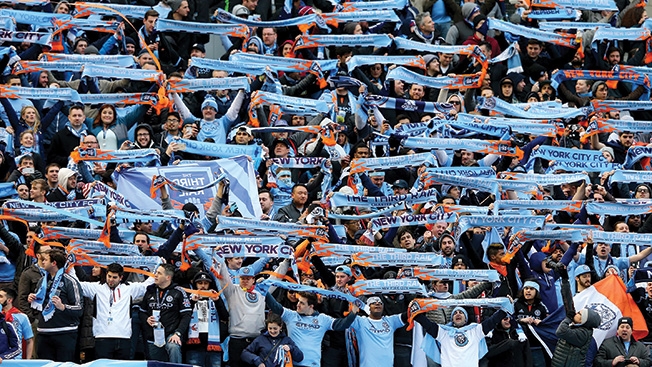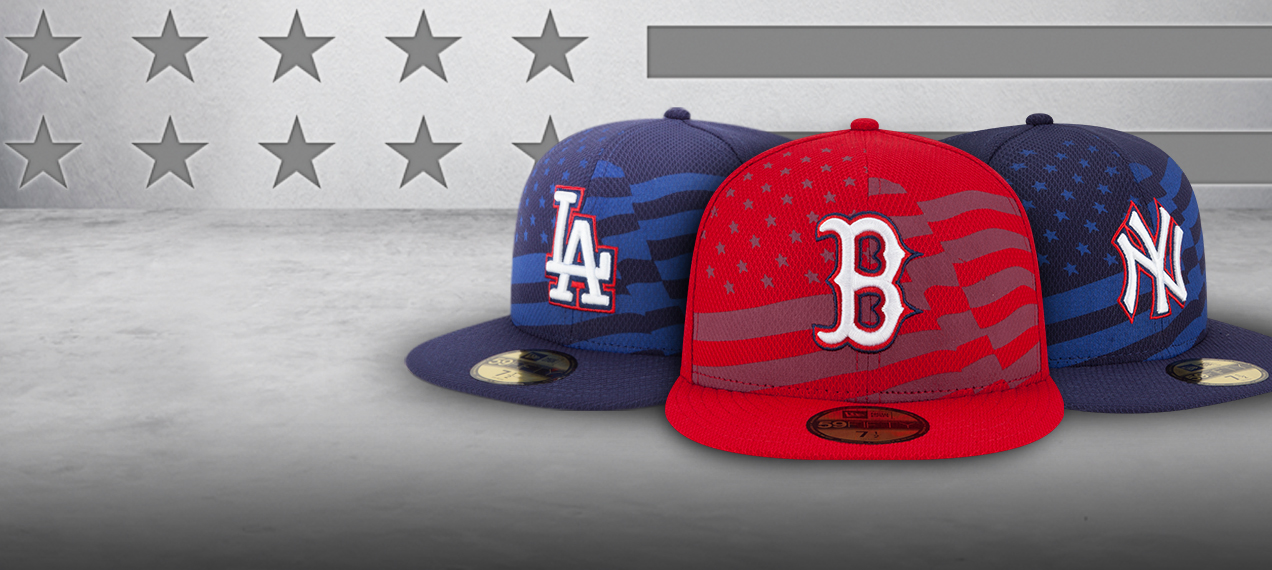Brand Sale: Procter and Gamble Shakes up Brand Portfolio
Proctor and Gamble has been a case study for branding strength for the past 50 years. Its market insight, audience-centricity and ability to invest in brands have grown its brand portfolio to 180 total brands, including 23 different billion-dollar brands.
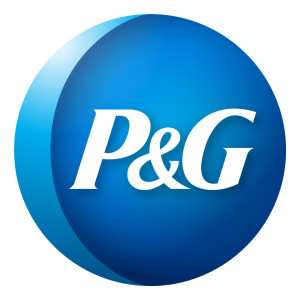 Brands have come into the P&G fold through internal innovation (think Swiffer) as well as through acquisition like Gillette, Duracell and Braun. Through a multi-brand approach, P&G has been one of the few companies to win entire categories– like laundry detergent with brands such as Tide, Gain, Era and many more.
Brands have come into the P&G fold through internal innovation (think Swiffer) as well as through acquisition like Gillette, Duracell and Braun. Through a multi-brand approach, P&G has been one of the few companies to win entire categories– like laundry detergent with brands such as Tide, Gain, Era and many more.
In the past when marketing dollars flourished, route to consumer communication was simple through major network TV and the battle for shelf space was won through a handful of macro-retailers, the P&G model excelled. Other consumer brand holding companies like Unilever and Newell Rubbermaid tried to emulate the P&G model through consumer insights and go-to-market excellence.
But as we know, the market today is different than it was even 5-10 years ago. The consumer is savvy, their ability to gain information from a wide array sources has increased, their ability to communicate with one another is broader and easier and the customer landscape in an omni-channel world is ever expanding.
In order to meet greater global market complexities, P&G has decided to alter their approach towards the market with one of most publicized brand portfolio shakeups we’ve seen in recent years. A.G. Lafley, the company's chairman, president and CEO has cast a vision of a future P&G that is "a much simpler, much less complex company of leading brands that's easier to manage and operate."
What does this mean for the marketplace?

Surely, there are active groups of companies doing internal market analysis for which of the P&G brands they could get their hands on, which brands if purchased could best complement their brand portfolios, and how could they fund these house-hold-named brands in order to win greater market success. This strategy can be seen with Coty, a global beauty products manufacturer, buying up 43 P&G beauty brands to align to its global brand portfolio.
The brands that P&G decides to keep will surely continue to be strong, well-known, well- funded and most likely have more innovations and partnerships between brands to bolster brand strength in place of creation of new product brands– think Tide, Tide Pods, Tide HE Turbo, Tide with Febreze, etc.
I will miss the idea of a P&G giant portfolio, mostly because it reminds me of simpler times. I was hoping that fewer, bigger, better was only in the minds of the scrappy – but it seems that even this marketing giant has to face the reality of scarce resources, improved profitability and streamlined go-to-market strategy. I have no doubt that P&G will execute with excellence, and I’m excited to see what the purchasers of these global brands have in mind for the P&G brands entering their portfolios. It’s one of the things I love most about marketing and brand strategy; time will only tell who does it best.
Addison Whitney is a global branding firm with a passion for building strong brands.
To learn more about Addison Whitney, visit our website at AddisonWhitney.com, or contact us here.
Branding Beyond the Field
When determining the success of a sports franchise brand, the product on the field obviously plays a large part. Wins bring publicity, excitement and recognition, all which are important aspects for any team’s brand.
But much of what goes into building a strong sports brand can’t be counted on the scoreboard. When looking to successfully brand a sports franchise, many lessons can be learned from branding organizations.
Understanding the audience is an important part of ensuring a brand’s success, and with sports franchises two major audience groups emerge – their fans, and the media. These two drive much of the success factors for branding in sports, and but hold much different places in a brand strategy.
 The media sits at the confluence of two main arteries in branding – the need for a brand’s essential aspects (name, logo, colors, etc.) and the want for secondary branding (brand characteristics, persona, etc.) – in order to do their job.
The media sits at the confluence of two main arteries in branding – the need for a brand’s essential aspects (name, logo, colors, etc.) and the want for secondary branding (brand characteristics, persona, etc.) – in order to do their job.
A team without a name isn’t a very easy team to write or broadcast about, and one with an unfavorable color palette will cause headaches for the television producers. Additionally, a team with a strong brand and culture is one that breeds quality storylines, leading to additional media coverage. Therefore, when creating these aspects of a brand, the ease at which a franchise can help this group is beneficial in gaining appreciation and assistance moving forward.
The fan audience is one that not only engages in the resulting brand materials, but also looks to be actively involved in establishing a connection with the brand. Franchises would be wise to create brands that strengthen this relationship, from actions designed to ingrain the team into the local culture or fan groups or by including the opinions of their fans in franchise decisions.
New York City FC, a Major League Soccer team that debut this season and plays its games in Yankee Stadium, has embraced the concept of connecting to its city and fans by focusing much of its branding efforts on cementing its role as “New York City’s Team.” From crowdsourcing the decisions of various brand elements, such as the team’s logo, to focusing on what Tom Glick, President of NYCFC, said about branding the team, “We wanted to give birth to a new club for New Yorkers, to build it with New Yorkers.”
The team was smart in this strategy because they understood both the passion felt by soccer fans to their favorite clubs, and also the close connection many New Yorkers have for their city. Combine these two and you have a potential fan group who is deeply loyal to their hometown club, and one they weave into the very fabric of their community. Using them as a resource in building the brand and continuing to help it grow gives a grassroots feel that allows the fans to be involved and connected, strengthening their emotional bond with the club.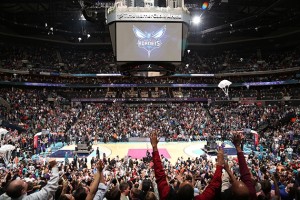
For instance, just as with other branding strategies, finding the right name goes a long way. As they say, you only get one chance to make a first impression, and the majority of the time, the name is that first impression, one that will continue to resonate throughout its time in use.
It is also the brand aspect that carries the most weight in exposure for the brand, as any reference to the team will more than likely use some aspect of its name. The name should resonate with the fans, as the NBA's Charlotte Hornets learned when they researched a rebrand from their old name as the Charlotte Bobcats.
When the first iteration of the Hornets relocated, the NBA gave Charlotte an expansion team, which was named the Charlotte Bobcats - an example of a name that had no history with the area and no emotional connection with the local population. After years of this disconnect, the team announced to much fanfare the return to the original Hornets name and colors, and the introduction of a logo that hearkened back to the prior Hornets logos.
The acknowledgement of the strength of the Hornets brand and the actions taken to return to this brand showed how much the Charlotte franchise valued their fan audience.
Branding a sports franchise can be a long, sometimes bumpy, journey. These brands are some of the most visible in the world, and their impact can be far-reaching. But by understanding the audiences, working to help meet their needs and allowing for a brand to settle a strong foundation, this global reach can be a welcome return.
Image sources:
https://www.nba.com/hornets/gallery/hornets-brand-identity-launch
https://matchstic.com/blog/tag/oregon-football-uniforms/
Addison Whitney is a global branding firm with a passion for building strong brands.
To learn more about Addison Whitney, visit our website at AddisonWhitney.com, or contact us here.
Diet Coke: A Case for Individualized Branding
Recently The Coca-Cola Company has revealed their plans to market all of their Coca-Cola related brands - Coca-Cola, Coca-Cola Life, Coca-Cola Zero, and Diet Coke - as a cohesive team of products, rather than individually.
Market research has shown that there is some confusion about what differentiates these four products, and the Coca-Cola Company hopes that marketing them as variations of one larger product, Coca-Cola, will help not only to clear up this confusion, but also to strengthen the overall brand to the great benefit of each individual product.
As seen to the right, an associated magazine ad emblazoned with the slogan “Good things come in fours,” shows a clear example of what the company’s new strategy will entail. I think bringing brands closer to a larger corporate brand, especially one as powerful and recognizable as Coca-Cola, is great strategy for three of these four brands.
However, Diet Coke, a soda which doesn’t even share the Coca-Cola name like the other three drinks in this branding strategy, has developed such a strong brand identity unique from its corporate company that this homogenization will, in my opinion, fundamentally change Diet Coke.
So what it is that makes Diet Coke so different from other Coca-Cola brands? A Diet Coke, like the Starbucks Cup, has become the handheld beverage accessory of the fashionable, endorsed by celebrities like Ariana Grande and Lady Gaga.
Most recently Diet Coke has launched an extensive and emblematic ad campaign featuring the fashionable and famous Taylor Swift. The red words spelled out on a Diet Coke can coordinate perfectly with Taylor’s well-known red lips. Even beyond this, Taylor aligns perfectly with the brand image of Diet Coke because she has recently become a fashion icon, not just in elite circles of Hollywood, but to the average young woman, a group which Diet Coke has always prioritized  in their marketing. Recently, Taylor’s fashion choices have become very bold, without sacrificing the stylish class she has always been known for. Thus, Diet Coke, a classic but still immensely popular and always innovating, is Taylor’s beverage equivalent.
in their marketing. Recently, Taylor’s fashion choices have become very bold, without sacrificing the stylish class she has always been known for. Thus, Diet Coke, a classic but still immensely popular and always innovating, is Taylor’s beverage equivalent.
Diet Coke’s brand isn’t just approved and endorsed by fashionable celebrities. It has even earned the backing of fashion designers themselves. Over the past decade Diet Coke has rolled out a tremendous number of limited edition designer bottles and cans. Comm De Garcons, Diane Von Furstenberg, and Marc Jacobs are just a few of the many designers who have jumped at the chance to have their designs featured on a Diet Coke bottle.
Diet Coke even hosts an annual “Red” fashion show to support women’s heart health and also to remind the world of their preeminence as a stylish soda. Diet Coke, when it was created thirty three years ago, was made with an entirely different recipe than Coca-Cola.
Unlike Coca-Cola Zero, Diet Coke isn’t just Coca-Cola without the calories; it is its own uniquely flavored drink, and just as Diet Coke’s physical ingredients are different from Coca-Cola, so too are the ingredients that make up their branding and marketing strategy.
The day after Labor Day, Diet Coke tweeted “you shouldn’t wear white after Labor Day, but no one said anything about silver and red.” Rather than just wishing its followers a happy Labor Day, the Diet Coke brand took the opportunity of using the day after this holiday to remind the Twitter world of their brand’s role as a versatile fashion accessory.
In my opinion, this really sums up the image of Diet Coke. Not only is it deliciously addicting, but it carries connotations of style that no other soda can match, connotations which risk being lost if Diet Coke becomes only another option in the homogenous Coca-Cola lineup.
Image sources:
https://www.marketingweek.com/2015/03/06/5-things-you-need-to-know-this-week-5/
https://blog.acmebrooklyn.com/post/62999727300/acme-taylor-swift-and-a-diet-coke
Addison Whitney is a global branding firm with a passion for building strong brands.
To learn more about Addison Whitney, visit our website at AddisonWhitney.com, or contact us here.
Branding with Emotion
It is well known that people often buy based on emotions, and justify with facts. PsychologyToday.com cites a study which showed “when evaluating brands, consumers primarily use emotions [such as] personal feelings and experiences rather than information.”
Though offering very different products, two relatively new brands, Packed Party Gift Boxes and S’well Water Bottles have used this unique, human tendency to turn their brands from one-woman shows to nationwide phenomenon in a matter of years. Each company has taken advantage of the ability of social media, and especially Instagram, to appeal to the emotions of a large group of followers. These companies’ social media accounts are undeniably cool, quirky,  interesting, and stylish, suggesting to their many followers that their brands not only possess all of these characteristics but that, in fact, the brands might be able to confer these traits in part upon those who use them.
interesting, and stylish, suggesting to their many followers that their brands not only possess all of these characteristics but that, in fact, the brands might be able to confer these traits in part upon those who use them.
Sarah Kauss, a Harvard grad and founder of S’well water bottles, has cleverly created a water bottle brand that has both a fashionable appearance, initially speaking to the emotions of the consumer, and functionality that then captures his or her loyalty. For many water bottle companies, functionality is their branding strategy. For other companies, style is the chosen focus of their brand. However, S’well has created a distinct brand centered around the concept of fashionable functionality, using the stylish elements of the bottle to appeal emotionally to the consumer, while also supporting the style with usefulness.
S’well’s Instagram is full of fashionable people, their outfits, and sometimes even their nails, coordinated to their water bottles. Thus, the brand has been able to gain reputability as a fashion item, a reputation which has helped them gain partnerships with even larger fashion influencers like J. Crew, Nordstrom, and Vogue. Now, with 34,800 Instagram followers, revenues exceeding 10 million in recent years, and celebrities toting them everywhere, I think it’s fair to say that S’well bottles have become the most stylish sip for sale.
 Packed Party, with 37,700 Instagram followers, also began from one woman armed with an idea and an ability to cater to the emotional desires and impulses of consumers. Jordan Jones, the founder of this quirky, fun, and utterly Instagrammable brand says that the company’s entire brand strategy revolves around her hope that “each time you send or receive one of our navy packages you smile…knowing someone else cares about you or you care enough about yourself to know you need to start the party.”
Packed Party, with 37,700 Instagram followers, also began from one woman armed with an idea and an ability to cater to the emotional desires and impulses of consumers. Jordan Jones, the founder of this quirky, fun, and utterly Instagrammable brand says that the company’s entire brand strategy revolves around her hope that “each time you send or receive one of our navy packages you smile…knowing someone else cares about you or you care enough about yourself to know you need to start the party.”
This statement of purpose is centrally focused on the emotional effect her brand has on consumers. Through social media marketing, Jordan Jones has shown herself, her employees, and the people who celebrate with a Packed Party to be confident, kind, and just downright fun. She has branded her company as people who I would trust implicitly to plan a party for me, and from Packed Party’s large Instagram and blog following, it’s evident that many others feel the same way. Jordan has demonstrated a unique ability to further the success of her brand by making sure her customers not only trust Packed Party, but also have a girl crush on the women responsible for creating those little navy boxes.
Unless you’re a robot, chances are you feel emotions; so, while both of these companies are selling products that are certainly not a practical necessity to anyone, they have been successful because they have branded their products as emotional necessities. Packed Party looks like the most fun, cool product, so I need it. S’well looks like the most fashionable, coveted water bottle, so I need it. Emotions blur the lines between need and want, and each of these branding campaigns has successfully moved S’well and Packed Party into that blurry, grey area.
Addison Whitney is a global branding firm with a passion for building strong brands.
To learn more about Addison Whitney, visit our website at AddisonWhitney.com, or contact us here.
Branded on the Fourth of July
As June comes to a close, consumers begin to see the flood of red, white and blue wash over their favorite brands, as each looks to find a way to incorporate the Fourth of July into their branding, marketing and advertising efforts.
 As with many holidays, brands can easily get lost in the increased noise of similar branding strategies – there are always the go-to ways to incorporate Halloween into branding, for instance – but the Fourth of July offers brands varying angles to which they can position their brand.
As with many holidays, brands can easily get lost in the increased noise of similar branding strategies – there are always the go-to ways to incorporate Halloween into branding, for instance – but the Fourth of July offers brands varying angles to which they can position their brand.
Branding on this holiday, and any holiday, must consist of careful and well-thought strategies that succeed in maximizing the inherent positive associations of the holiday but yet still stay true to the overall brand positioning. Going too far off that plan is a recipe for disaster, opening a brand up to seem as if they are willing to abandon their core brand principles in the name of an easy marketing campaign possibility.
Brands who understood how to walk this line and know how to connect the holiday to their branding characteristics continued to stand out in a crowded marketplace.
For instance, Brit + Co., an online media and e-commerce platform who has built their brand around providing women and girls with tools designed to teach, inspire and enable their creativity, created an email marketing campaign centered around the celebratory aspect of the holiday, highlighting some of their most patriotic and colorful merchandise. The design of the email matches the design of their website, promoting brand unity across all of the platforms.
Brit + Co. shows that they get how to fit the characteristics the holiday with the characteristics of their brand. Their brand personality is fun, quirky, creative and colorful – all of which can be used to describe their Fourth of July branding and marketing. By focusing on the beach/party atmosphere, they touch on their creative sides, showing people how to creatively throw their own Fourth of July soiree.
The professional sports industry is one that has never been shy about strategically branding itself for these patriotic holidays. For the past few years, professional baseball leagues have welcomed the holiday with patriotic-themed, one-time-only uniforms and hats. From the lowest levels of the minor leagues all the way up to the clubs that make up Major League Baseball, teams across the country wear these uniforms and hats, which are supplemented by various red, white and blue accessories, from batting gloves and undershirts to bases and themed designs cut into the field.
In a vacuum, these special uniforms and hats can seem to fall within the realm of celebrating the holiday while without going too far outside their comfort zone – as do most uniform modifications. However, much criticism for these leagues when they trot out “special” uniforms is that they immediately put these items up for sale, seemingly proving that the reason for the re-branded product isn’t to celebrate or commemorate, but to make some extra money on merchandise sales.
The Fourth of July is a holiday commemorated by all Americans and has turned into a day to celebrate all things red, white and blue. Any time you can find a way to connect a brand to such a large audience, and to have a little fun in the process, go for it. It’s what the Founding Fathers would want.
Image Sources:
https://blog.hubspot.com/marketing/july-fourth-marketing-examples
Addison Whitney is a global branding firm with a passion for building strong brands.
To learn more about Addison Whitney, visit our website at AddisonWhitney.com, or contact us here.
Making a Strong First Impression: 5 Benefits of Clinical Trial Branding
It has been said that you never get a second chance to make a first impression. For many new assets the clinical trial stage of development is that first impression – the initial interaction it will have with those who will impact its future both from research and consumer perspectives.
With a strong brand in place prior to making this first impression, brands can ensure they will be moving forward following a positive first impression and giving a product a better chance to develop a positive brand image. Here are five benefits to clinical trial branding:
- Build Brand Equity Early
In the development of a new asset, branding during the clinical trial process is step one in building brand equity through awareness and familiarity, giving the brand an opportunity to establish positive associations and laying the foundation for future perceptions.
“In a saturated market for new pharmaceutical products, the companies that can create differentiation within their field and stand out to their audience are the ones best set up for a successful journey through the drug development process and beyond,” says Brannon Cashion, Addison Whitney Global President. “This is where clinical trial branding makes its mark. Having a strong brand in the clinical trial process can be the driver behind a raised level of recognition and make the asset stand out.”
- Make it Easy to Remember and Recall
The fact that a branded name is easier to recognize, process and remember than a code-like name is another point of differentiation provided by clinical trial branding.
Both internal teams and external audiences need to be on the same page in regards to the name when referring to an asset, and when branded, possesses a well-thought-out and researched name that can serve both groups in their interactions with it.
- Tell the Brand Story
Due to its presence early in a product’s development, clinical trial branding can also serve as a messenger for the asset, communicating its various characteristics.
During the branding processes, research is done to identify how this will be integrated in the brand, based on both the characteristics of the product and taking into consideration the overall market and its opportunities.
- Lay the Marketing Foundation
Clinical trial branding also provides a connection to early marketing efforts for an asset. Branding lays the base to which marketing builds upon, and a strong brand in the clinical trial stages gives it a head start when beginning to determine marketing strategies.
This is again why beginning to brand while in clinical trial is so important – if an organization chooses to wait until later in the product’s development, as they will be working through the branding process while competing assets have already introduced a brand that is building equity and awareness, filling the gaps in the marketplace.
- Tailored to a Proper Fit
Clinical trial branding can take many forms and include an array of features, allowing it to be tailored to fit the characteristics of the asset and the marketplace. This versatility ensures that it encompasses the best aspects of the product and instills confidence in the product’s chances for success.
“A successful and well-strategized branded clinical trial exudes this confidence to the audience, including potential investors and suppliers,” adds Cashion. “This can raise the profile of the asset to otherwise unreachable levels and grow its brand equity.”
Building a brand in the clinical trial stage is an important step in a product’s development, as it creates the first impression that is critical in driving value and success moving forward. These five reasons outline how it can start to work immediately to build a road for success, and can help provide a more effective clinical trial process.
Addison Whitney is a global branding firm with a passion for building strong brands.
To learn more about Addison Whitney, visit our website at AddisonWhitney.com, or contact us here.
Branding Growth: 3 Industries Seeing a Brand Increase
There is never a lack of competition for brands, both within their own industry or for the attention of their audiences. This constant competition underscores the importance of creating and maintaining a strong branding strategy and ensuring that all aspects of a brand are in line with that strategy.
Here are three industries that have seen a recent rise in brands, and how the influx of these new brands is impacting the overall strategy for the newcomers.
- Wearables/Internet of Things Products
Consumers are already more connected than we’ve ever been - our lives are driven by technology. But, much like most technological trends, we always want to find out what the next step could be. With wearables, such as smart watches Google Glass, this connectivity is taking forms that will literally be attached to the user. The Internet of Things is taking this connectivity and advancing it to encompass everyday objects and make them all work together – the thought of having a thermostat that adjusts the temperature when you open the garage door is no longer science fiction.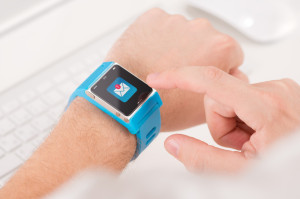
This is such an explored area of the technology industry that new and unique strategies come into play for brands. Touting a product as “groundbreaking” or “revolutionary” does not carry the same weight as it does in other industries, as the vast majority of brands can claim the same.
Therefore, a strong and well thought-out strategy on how to position a brand in all aspects – establishing the verbal and visual characteristics, creating a brand vision and mission, along with others – can be the springboard for a great product to find success.
- Craft Beer Breweries
The trend toward smaller/localized food and drink has definitely made its way into the brewing industry. Craft breweries and companies are growing at an unprecedented rate recently, riding the wave of consumers wanting to buy and consume locally-made products. According to the Brewers Association, an industry trade group, in 2015 craft brewers saw an increase of 18 percent in the volume of barrels produced over the previous year, and have hit the point where about one out of every 10 beers sold in the United States come from craft brewers.
From a branding standpoint, the craft beer/brewery industry is fast approaching an issue that many industries would welcome – they are running out of possible names for each brand. As noted in this article from the NPR, new brands looking to break into the industry and join the over 3,400 breweries in the United States are facing possible trademark and legal issues when creating their names.
For a brand to stand out in this space, it takes more than just a catchy name. An all-inclusive branding strategy is necessary to separate from the pack. Visual and verbal must combine to create a powerful brand imagery that jumps out at the consumer in the store, which for many of the lesser-known brands, is the one chance to get front and center with their audience.
- Social Media Platforms
Bubbly. Unmetric. Frilp. Space Tag. At first glance, it may look like someone got distracted while typing and ended up with a jumble of words and letters. But, in fact, these are four of the “15 Social Media Companies to Watch in 2015” by Forbes.
 The majority of social media users know the big players – Facebook, Twitter, Instagram, etc. They have dominated the social media space for years, but that hasn’t dissuaded a rise in new social media platform startups that seem to hit the market daily. Some have more success than others, where the majority come and go with little publicity.
The majority of social media users know the big players – Facebook, Twitter, Instagram, etc. They have dominated the social media space for years, but that hasn’t dissuaded a rise in new social media platform startups that seem to hit the market daily. Some have more success than others, where the majority come and go with little publicity.
Consumers and audiences are constantly looking for the “next big thing” in the social media space, the new brand that will revolutionize how we act and interact online. Add to the equation that many of these new companies focusing on very specific services, and you have a recipe for a brand explosion.
For social platforms, brand strategy is vital. Naming “rules” are more relaxed for these brands, allowing for more creativity and thinking outside the box. But how a brand is introduced to the market and how they strategically differentiate themselves to the public will go a long way into determining whether they join the list of long-lasting brands or find themselves washed along the shore.
Sources:
https://fortune.com/2015/03/16/craft-beers-volume-rising/
https://www.forbes.com/sites/ilyapozin/2014/12/17/15-social-media-companies-to-watch-in-2015/
Addison Whitney is a global branding firm with a passion for building strong brands.
To learn more about Addison Whitney, visit our website at AddisonWhitney.com, or contact us here.
AW Capabilities Month: What is Verbal Branding?
Welcome to Addison Whitney Capabilities Month! Throughout the month of March, we will be designating one week where we will be highlighting one of Addison Whitney’s capabilities – visual branding, verbal branding, market 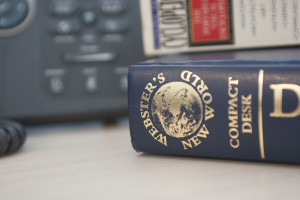 research and brand strategy - via brand salsa and our social media channels.
research and brand strategy - via brand salsa and our social media channels.
This week, we are focusing on Verbal Branding, which encompasses the verbal aspects of your branding portfolio.
But what is Verbal Branding? What does it mean to you? Make sure to join the conversation on social media using the hashtag #AWCapabilitiesMonth.
At Addison Whitney, our philosophy when it comes to verbal branding is "Play on words? Don’t mind if we do!"
Branding is the construction of an identity, and a continual process, but at the foundation of every brand is its name.
A strong brand name can convey a number of things like quality, reliability or clarity. But good names don’t happen overnight or by chance. It takes the perfect balance of creativity, purpose and strategic thinking to create strong brand names, which is something our verbal branding team has perfected over the years.
We partner with your team to merge innovative ideas with smart, strategic thinking to build enduring corporate identities, company taglines and product names. Our unique naming process guarantees that our creative solutions will enable you to achieve your business goals, differentiate you from your competitors and create connections with your target audiences.
Here’s what our verbal branding team can do for you:
- Global Brand Name Development
- Global Trademark Prescreening
- Tagline Creation
- Global Linguistic Evaluation
- Corporate Identity Development
Click here for a sampling of our verbal branding case study stories, and here for our comprehensive verbal client list.
Addison Whitney is a global branding firm with a passion for building strong brands.
To learn more about Addison Whitney, visit our website at AddisonWhitney.com, or contact us here.
Want to get exposed to real projects and attain real-life knowledge and skills vital for success in verbal branding? Click here for information about interning with the Addison Whitney verbal branding team!
Lowe’s Enters Connected Home Market with New Brand
Looking to make a considerable mark in the smart/connected home market, Lowe’s has begun leveraging Iris, its new brand that offers a range of connected home products, as outlined in a new article from Warc, an advertising best practices, evidence and insights website.
The article, “Lowe’s Builds Smart Home Brand,” looks into how this new brand leverages Lowe’s experience in retail experience and product development in establishing a brand establishing a brand that is designed to go toe-to-toe with some of the top brands in the technology space in the race to the top of the smart home portfolio.
The Iris smart home management brand products allow consumers to connect all of their smart home devices across a platform of suppliers. From starter kits that provide a shortcut to starting the connected home process to accessories that supplement what the consumer already may have in their home, it is a brand that not only connects the home, but connects the products involved.
Prior to Iris, consumers looking to connect their home ran the risk of products not “talking” to one another if they came from different brands. But with Iris (and in turn, Lowe’s branding), products across platforms can be united in the home.
“Lowe’s moving into the connected home can position itself as the tech-savvy homeowner’s or contractor’s store of choice,” says Beth Anne McPheeters, Director of Brand Strategy at Addison Whitney. “It’s brilliant, considering that connected homes were a major feature of this year’s CES and are a top trend for home modifications that provide the best return on investment for homeowners now and in the future.”
The brand, Iris, is not only a way for Lowe’s to diversity its product offering, it is a way to tap into a growing general consumer market, expanding past that of home owners and professionals. Lowe’s is bringing its brand into a new space as an unexpected player. Lowe’s strategy behind Iris also extends to its impact on the overall brand attitude and perception, says McPheeters.
“Iris presents Lowe’s with an interesting way to evolve its brand,” she says. “When looking at Lowe’s and Home Depot, Lowe’s offers homeowners, particularly female shoppers, an easy-to-navigate experience with an emphasis on stylistic décor, not just home improvement/building products. This move can push Lowe’s into a gender-neutral technology leadership position, providing it with an opportunity to own Smart Home Improvement, even if only for the short term.”
Sources and Links:
https://www.warc.com/News/Default.aspx?ID=34244
https://www.lowes.com/cd_Products_1337707661000_
https://www.lowes.com/cd_Iris+Solutions+Center_1377803835565_
Addison Whitney is a global branding firm with a passion for building strong brands. We specialize in verbal and visual branding, brand strategy and market research.
To learn more about Addison Whitney, visit our website at AddisonWhitney.com, or contact us here.
When is it Time to Reinvent the Brand Wheel?
We've all heard the expression “there’s no need to reinvent the wheel.” Typically, it is used to explain the reasoning behind keeping the status quo, and not taking a chance and making a change where the speaker doesn’t see one being necessary.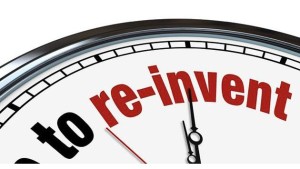
A brand strategy approach that takes this route is a risk and reward proposition, and a decision that does not come with a one-size-fits-all aspect. Each brand and each brand marketing approach is different, and the ones that find the most success are those who fit the decision appropriately with the brand.
Brand equity can be one of a company’s strongest and most valuable assets,” says RJ Clouse, Brand Strategy Manager at Addison Whitney. “As it relates to key elements of a brand, I think that reinvention rather than recreation is the key to ongoing and deep emotional connections.”
The Budweiser Clydesdales have become a staple of the brand’s Super Bowl advertising campaigns. For years, it has been a given that at least one of their commercials during the game would either feature or have a tie back to the Clydesdales. It’s what people have come to expect from the brand, and so far they have complied year after year.
Another less famous, but just as powerful for the brand, is Old Spice, says Clouse.
“Old Spice, with heritage in scent and masculinity, reinvented its message of what it means to be masculine in an authentic and humorous way. This approach builds the deep brand connection with a solid foundation in brand equity for a new generation.”
After years of brand equity building connected with this particular ad campaign, how wise would it be for Budweiser to change its approach? In other words, when you know what kind of ad you are getting, and it has been successful in the past, does it make sense to reinvent the wheel?
The answer seemingly lies within the strength of the metaphorical wheel. Is it an essential and part of the foundation for the brand strategy? Or is it an aspect that has made a move recently into its strong point, but seems to have a shelf life?
In the second instance, the rule of thumb seems to be that it is better to make a change one year too soon than one year too late. Brand marketing can withstand a response that consumers miss that characteristic, but that response is preferable to backlash that it has become old and outdated.
This is where brands and marketers need to be one step ahead in the strategic planning. They need to see the writing on the wall and anticipate what is coming down the road when it comes to brand staples and have plans in place before its run ends.
On the other side of the equation, when a brand staple has become synonymous with the brand itself, as difficult as it may be for the creative focus and the creative departments, keeping it around in some fashion is really the best option.
Consumers, for the most part, gravitate toward the familiar when it comes to their branding, and in this case, the familiar is something that can help grow a brand’s trust with the consumer. They see something they recognize in an ad, such as the Budweiser Clydesdales, and they begin to connect the brand with the nostalgia and comfort that these familiar images bring.
“At times, I think recreation may pay off for short-term benefits of increased awareness or trial,” says Clouse. “But these approaches may not build the long-term, deep, emotional brand equities we strive to help brands achieve.”
Addison Whitney is a global branding firm with a passion for building strong brands. We specialize in verbal and visual branding, brand strategy and market research.
To learn more about Addison Whitney, visit our website at AddisonWhitney.com, or contact us here.

